
USS Whale (SS-239), a Gato-class submarine, was the second ship of the United States Navy to be named for a whale, an extremely large, aquatic mammal that is fishlike in form. The USS Cachalot (SS-170) commissioned on 1 December 1933 preceded the Whale.

USS Atule (SS/AGSS-403), a Balao-class submarine, was the only ship of the United States Navy to be named for the atule.

USS Tilefish (SS-307), a Balao-class submarine, was the only ship of the United States Navy to be named for the tilefish, a large, yellow-spotted deepwater food fish.

USS Picuda (SS-382), a Balao-class submarine, was originally named Obispo, making her the only ship of the United States Navy to be named for the obispo, a spotted sting ray.
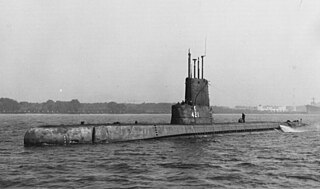
USS Trutta (SS-421), a Tench-class submarine, was the only ship of the United States Navy to be named for the trutta, a variety of trout, distinguished from the typical trout by its small, black spots and its smaller and fewer scales. She was originally assigned the name Tomtate, often misspelled as Tomatate, and would have made her the only ship named for the tomtate, a food fish of warm American waters having a compressed body, a toothless palate, and conical jaw teeth, but was renamed Trutta on 24 September 1942. Her keel was laid down on 22 May 1944 by the Portsmouth Navy Yard. She was launched on 18 August 1944 sponsored by Mrs. Edward C. Magdeburger, and commissioned on 16 November 1944 with Commander Arthur C. Smith in command.

USS Tigrone (SS/SSR/AGSS-419), a Tench-class submarine, was the only ship of the United States Navy to be named for the tigrone, a tiger shark found in tropical waters. Her keel was laid down on 8 May 1944 by the Portsmouth Navy Yard. She was launched on 20 July 1944 sponsored by Mrs. Mary B. Grisham, wife of Captain Charles F. Grisham, USN, Superintendent of the Portsmouth, N.H., Navy Yard, and commissioned on 25 October 1944.
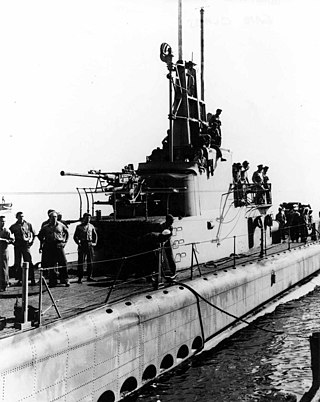
USS Gabilan (SS-252), a Gato-class submarine, was the only ship of the United States Navy to be named for the gabilan, an eagle ray of the Gulf of California.

USS Ray (SS/SSR-271), a Gato-class submarine, was the first ship of the United States Navy to be named for the ray, a fish characterized by a flat body, large pectoral fins, and a whiplike tail.

USS Balao (SS/AGSS-285) was the lead ship of the United States Navy's Balao-class submarines during World War II and named for the balao, a small schooling marine fish.
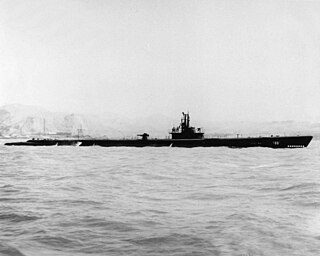
The first USS Trepang (SS/AGSS-412) was a Balao-class submarine in the United States Navy. She was named for the trepang, a marine animal sometimes called a "sea slug" or a "sea cucumber," having a long, tough, muscular body and found in the coral reefs of the East Indies.

USS Devilfish (SS/AGSS-292), a Balao-class submarine, was a ship of the United States Navy named for the devil fish.

USS Dragonet (SS-293), a Balao-class submarine, was a ship of the United States Navy named for the dragonet.

USS Sterlet (SS-392), a Balao-class submarine, was the only ship of the United States Navy to be named for the sterlet, a small sturgeon found in the Caspian Sea and its rivers, whose meat is considered delicious and whose eggs are one of the world's great delicacies, caviar.

USS Pilotfish (SS-386), a Balao-class submarine, was a ship of the United States Navy named after the pilot fish, a carangoid fish, often seen in warm latitudes in company with sharks.
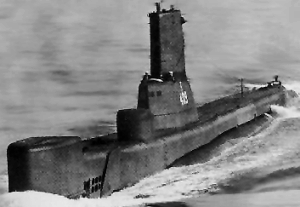
USS Piper (SS/AGSS-409), a Balao-class submarine, was a ship of the United States Navy named after the piper. Although built late in World War II, Piper completed three successful war patrols before the cessation of hostilities, operating as a life guard for plane strikes and as an advance picket for fast carrier task forces.

USS Spikefish (SS/AGSS-404), a Balao-class submarine, was a ship of the United States Navy, named for the spikefish. She was the first United States submarine to record 10,000 dives.
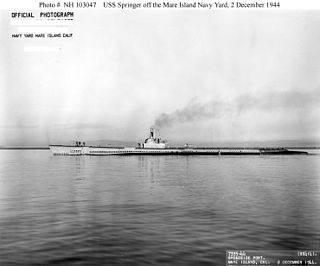
USS Springer (SS-414) was a Balao-class submarine of the United States Navy, named after the springer, a Grampus.

USS Pomfret (SS-391), a Balao-class submarine, was a ship of the United States Navy named for the pomfret, a fish of the seabream family which is a powerful and speedy swimmer, capable of operating at great depths.

USS Sea Fox (SS-402), a Balao-class submarine, was a vessel of the United States Navy named for the sea fox, a large shark, also called the thresher shark, which frequents the coast of Europe and the Americas.

USS Ronquil (SS-396), a Balao-class submarine, was the only ship of the United States Navy named after the ronquil, a spiny-finned fish found along the northwest coast of North America. It has a single dorsal fin and a large mouth and resembles the tropical jawfish.




















